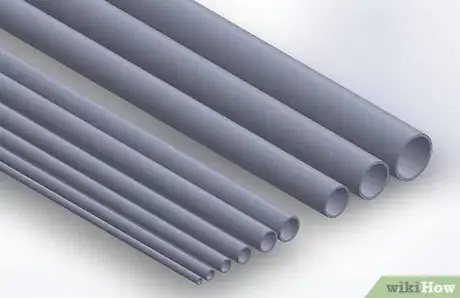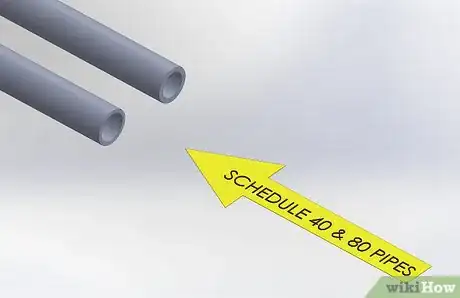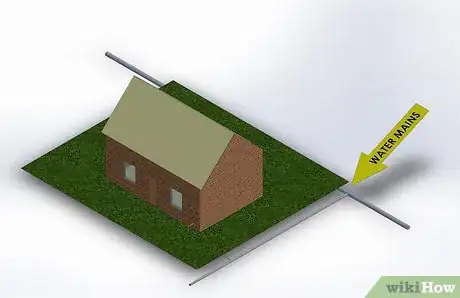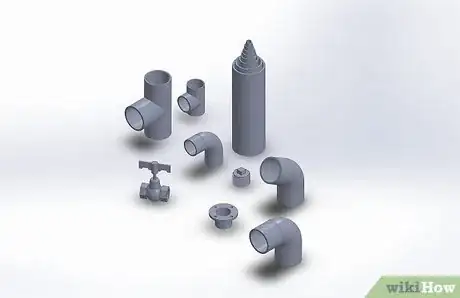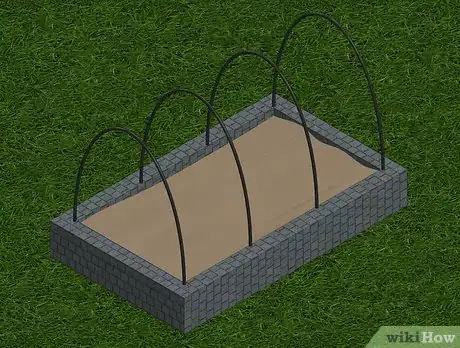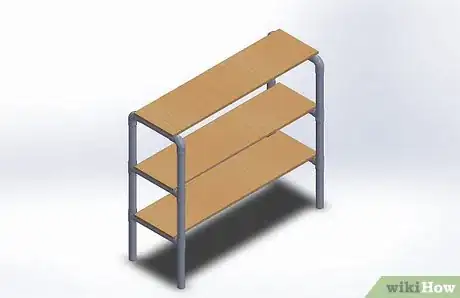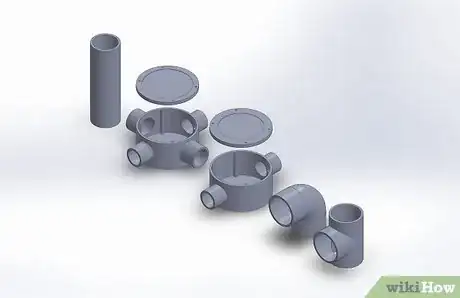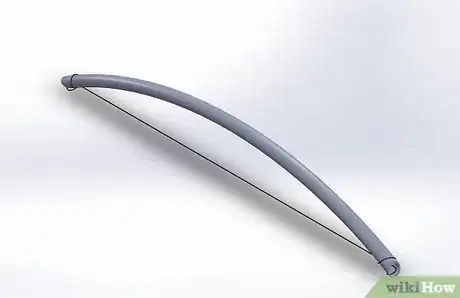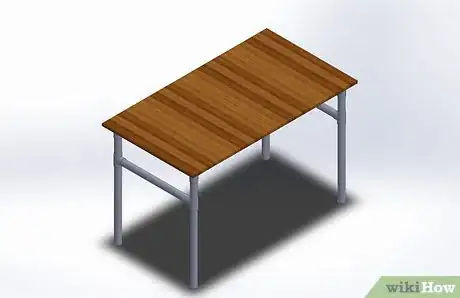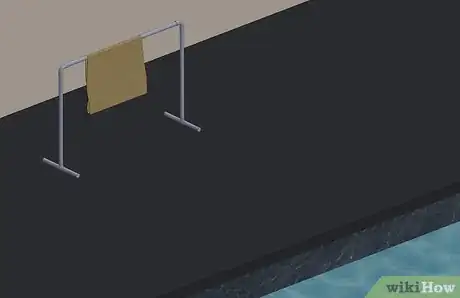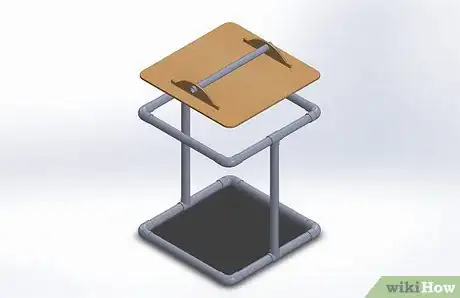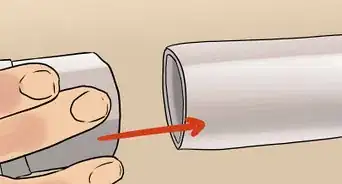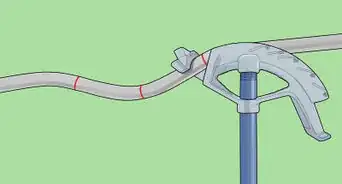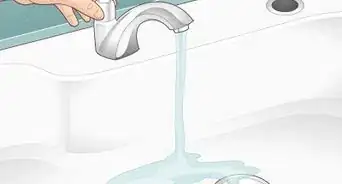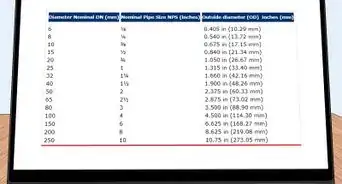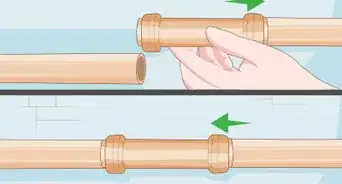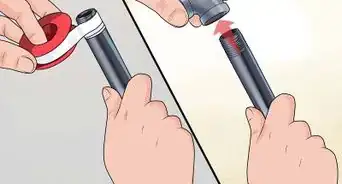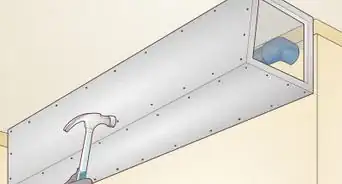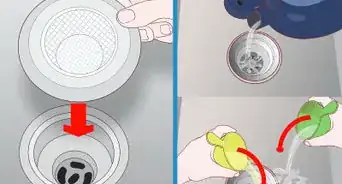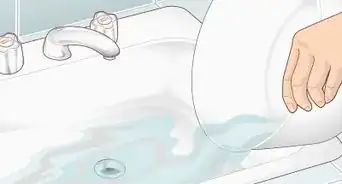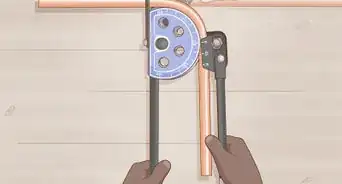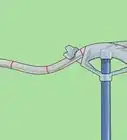X
wikiHow is a “wiki,” similar to Wikipedia, which means that many of our articles are co-written by multiple authors. To create this article, 15 people, some anonymous, worked to edit and improve it over time.
There are 9 references cited in this article, which can be found at the bottom of the page.
This article has been viewed 241,138 times.
Learn more...
Before you dive into a project, it's important to understand what kind of PVC pipe you need. PVC pipes vary in diameter as well as flexibility and temperature resistance. After reading this guide, you'll be able to select a PVC pipe with confidence.
Steps
Method 1
Method 1 of 3:
Understand the range of PVC pipes you can work with.
-
1Diameter:[1]
- In the United States, PVC pipes range in diameter from 3/8 to 24 inches (9.53-60.96 cm).
-
2Schedule (the thickness of a pipe's inner wall):[2]
- PVC pipes normally range from schedule 20 to 80.
Advertisement -
3Temperature:[3]
- C900 pipes are used for water mains, where water pressure may exceed 150 PSI (1034.21 KPA).
- CPVCs are rated for higher temperatures (they are also called hot water pipes).
- Cell-cores have the same wall thicknesses as CPVCs but are lighter and less expensive.
- If you plan to use PVC pipes for potable water plumbing, make sure they carry a National Sanitation Foundation seal.[4]
-
4Cost:
- Thinner pipes generally cost less, while thicker pipes cost more.
Advertisement
Method 2
Method 2 of 3:
If your project requires curved surfaces, use pipes with small diameters.
-
1
-
2
-
33/4 inch (1.91 cm) plumbing grade PVC pipes are very bendable and ideal for any project that requires flexibility, like green houses, pet agility hoops or other curved frames. These pipes will spring back to their original shape if bent.
- The actual exterior diameter of a 3/4 inch PVC pipe is not 3/4 inches, but rather 1.050 inches (2.67 cm).
Advertisement
Method 3
Method 3 of 3:
If your project requires stiffness and strength, use large diameter pipes.
-
1Schedule 40 is the standard class plumbing pipe for residential and commercial potable water services.[5]
- It can withstand 160 PSI (1103.16 KPA) at 72 degrees (22.22 degrees Celsius) and is suitable for rigid construction projects.
-
2Schedule 80 is the heaviest standard PVC pipe class.[6]
- The most common use for schedule 80 pipe is in underground electrical conduits. They are very stiff and suitable for rigid frameworks.
-
31 inch (2.54 cm) plumbing grade PVC pipes are slightly flexible but still fairly rigid. This pipe is ideal if your project requires minimal flexibility while demanding a strong framework.
- The actual exterior diameter of a 1 inch PVC pipe is not 1 inch, but rather 1.32 inches (3.35 cm).
-
41-1/4 inch (3.18 cm) plumbing grade PVC pipes are ideal for very rigid, lightweight projects. They are commonly used to build a strong sturdy platforms, like shelves, tables and walls.
- The actual exterior diameter of a 1-1/4 inch PVC pipe is not 1-1/4 inches, but rather 1.66 inches (4.22 cm).
-
51-1/2 inch (3.81 cm) plumbing grade PVC pipes are extremely rigid and heavy, and can be difficult to work with.[7]
- The actual exterior diameter of a 1-1/2 inch PVC pipe is not 1-1/2 inches, but rather 1.90 inches (4.83 cm).
-
62 inch (5.08 cm) plumbing grade PVC pipes are extremely strong and will hold weight without bending.
- They are also very heavy and expensive. However if your project requires a good foundation, 2 inch PVC pipes are ideal. They work well for canister-style projects (in conjunction with end caps) like garbage bag holders.
- Note: The actual exterior diameter of a 2 inch PVC pipe is not 2 inches, but rather 2.38 inches (6.05 cm).
Advertisement
Community Q&A
-
QuestionI am looking for the load bearing capability of 2-inch schedule-40 PVC. Specifically, can it be buried at a 24-inch depth and a non-load-bearing building post be placed on top of it with an 8-inch footer poured first on top of the pipe?
 Community AnswerI wouldn't use schedule 40 for your particular application. I would use schedule 80; it is much more rigid and is very tough. You can drive heavy equipment or commercial vehicles over schedule-80 PVC if it's buried sufficiently. Use schedule 80 and bury it deeper than 24' inches, if possible, and you shouldn't have any problems.
Community AnswerI wouldn't use schedule 40 for your particular application. I would use schedule 80; it is much more rigid and is very tough. You can drive heavy equipment or commercial vehicles over schedule-80 PVC if it's buried sufficiently. Use schedule 80 and bury it deeper than 24' inches, if possible, and you shouldn't have any problems. -
QuestionI want to use two 10' PVC pipes to slide a 41-pound canoe up to car racks. What is the smallest diameter PVC pipe that would be rigid and not break when the canoe is at the midpoint of the pipes?
 Community AnswerIt is highly unlikely that a PVC pipe will break under such a load; however, it will bend significantly. To avoid this, you can also check out metal fencing pipes that they use to put along the top of chain link. Find the diameter of PVC into which the metal pipe will fit, and use the metal pipe to add strength and rigidity to the PVC. The outer PVC will protect your canoe from scratches.
Community AnswerIt is highly unlikely that a PVC pipe will break under such a load; however, it will bend significantly. To avoid this, you can also check out metal fencing pipes that they use to put along the top of chain link. Find the diameter of PVC into which the metal pipe will fit, and use the metal pipe to add strength and rigidity to the PVC. The outer PVC will protect your canoe from scratches. -
QuestionCan I still buy the old style yellow PVC pipe?
 Community AnswerYes, you can. You can purchase it online.
Community AnswerYes, you can. You can purchase it online.
Advertisement
References
- ↑ https://www.harcofittings.com/DocumentLibrary/PVC/IPS/pvc_pipe_dimensions.pdf
- ↑ http://www.harrisonplastic.com/pvcschedule40-80specs.html
- ↑ http://www.coleparmer.com/TechLibraryArticle/688
- ↑ http://water.me.vccs.edu/concepts/material.html
- ↑ https://www.commercial-industrial-supply.com/resource-center/schedule-40-vs-schedule-80/
- ↑ https://www.commercial-industrial-supply.com/documents/Schedule-80-PVC-FAQ.pdf
- ↑ https://www.youtube.com/watch?v=RWn-dp9gBvA
- https://formufit.com/pages/pvc-101
- https://www.washingtonpost.com/business/2019/06/18/finding-right-size-pvc-pipe-each-job/
About This Article
Advertisement
